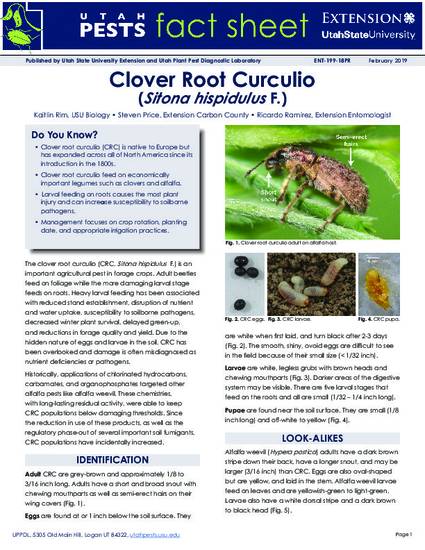
The clover root curculio is an important agricultural pest in forage production systems. Adult beetles feed on the host plant leaves while the damaging larval stage feeds on the roots below ground. Heavy larval feeding has been associated with reduced stand establishment, disruption of nutrient and water uptake, increased secondary plant pathogen infection, decreased winter plant survival, delayed green-up, and reductions in forage quality and yield. Due to the hidden nature of eggs and larvae in the soil, CRC has been overlooked and damage is often misdiagnosed as nutrient deficiencies or pathogens. Historically, applications of chlorinated hydrocarbons, carbamates, and organophosphates targeted other alfalfa pests like alfalfa weevil. These chemistries with long-lasting residual activity were able to keep CRC populations below damaging thresholds. Since the regulatory phase-out of carbofuran, methyl bromide, and other synthetic soil fumigants, CRC populations have incidentally increased.
Available at: http://works.bepress.com/ricardo_ramirez/43/
